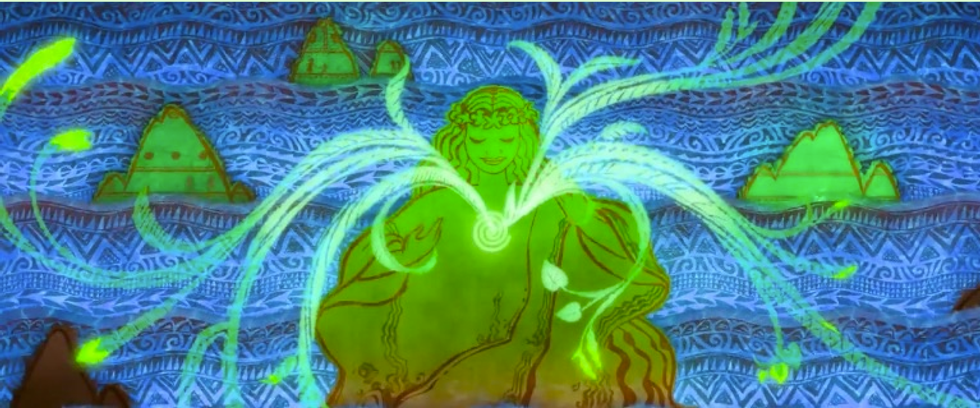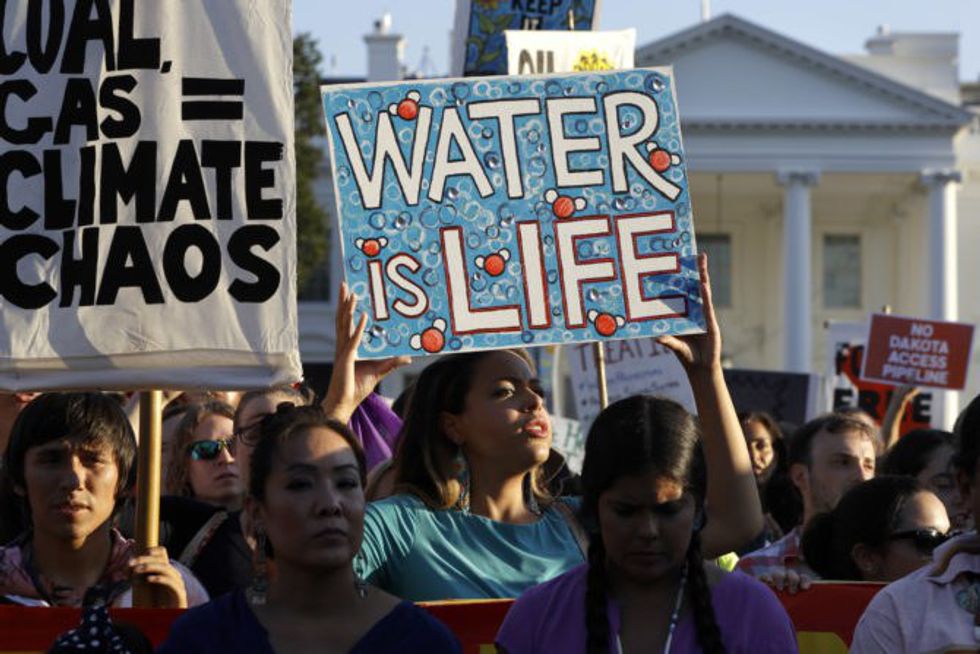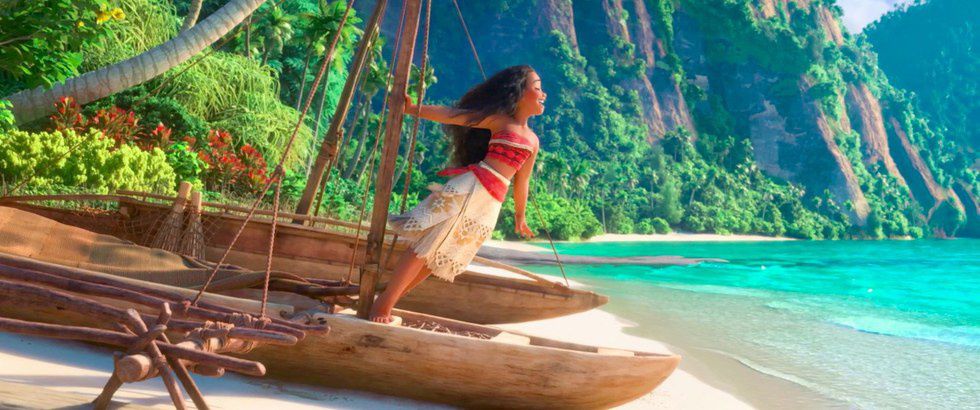In this moment, you're thinking: "but, what in the name of Dick Van Dyke's tap shoe collection can a historic gathering of Native American tribes to protest big oil and their mistreatment at the hands of the government have to do with that new cute Disney movie, by the Hamilton guy, about a Hawaiian girl, the Rock, and their crazy pet chicken have in common?" The truth is that at the center of both conflicts, real and ficticious, they share a common core:
The very same beating heart.
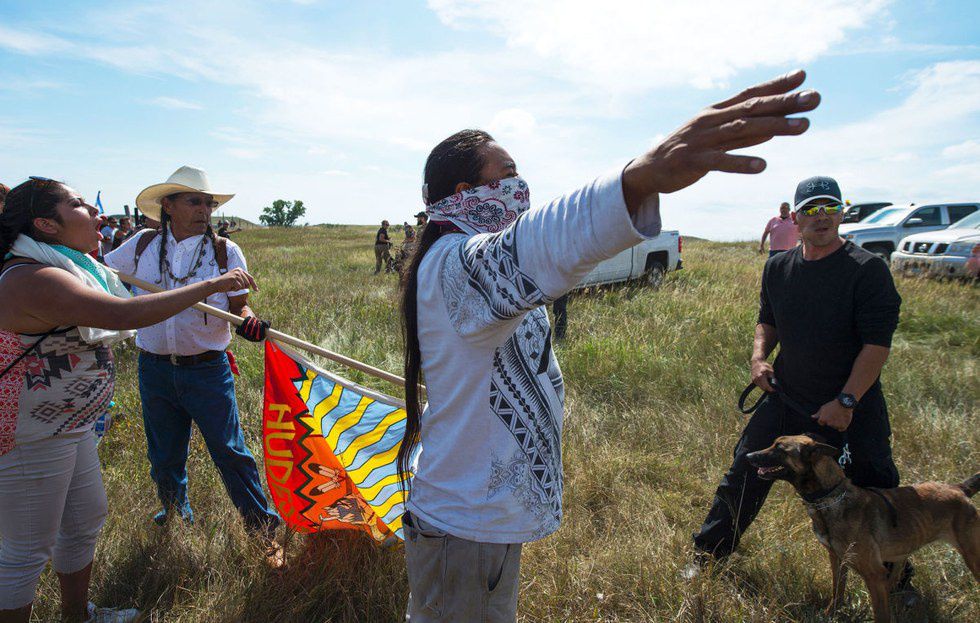
Well, here's the rub. I've learned many things as an undergraduate theatre major, and one of the most important things I learned regarding art, in all forms, is that it must always answer the question: "why now?" To expand the concept, in many peoples' opinions, good art should mirror and comment upon the world at large; bring something new to the table, so to speak. Contextualizing any piece of art is an important step in any act of conscious creation.
The bottom line: Art isn't made in a vacuum.
The artists over at Disney definitely have their mouse-eared thumbs resting on culture's pulse at all times. Their movies have grown and changed with the times they are produced in. This is, in fact, a huge factor in their success. Their newest blockbuster hit continues this tradition, whether it was entirely aware of it or not.
Besides bearing messages of fighting climate change, inner strength, and "make the ocean your friend" (because it will always have your back, even in moments of tough love), there is another more immediate parallel that Moana creators could not possibly have foreseen. And, in a way, that makes it even more impactful (as in: "yo, guys, hello!? We are still having this problem!" Or something more eloquent.).
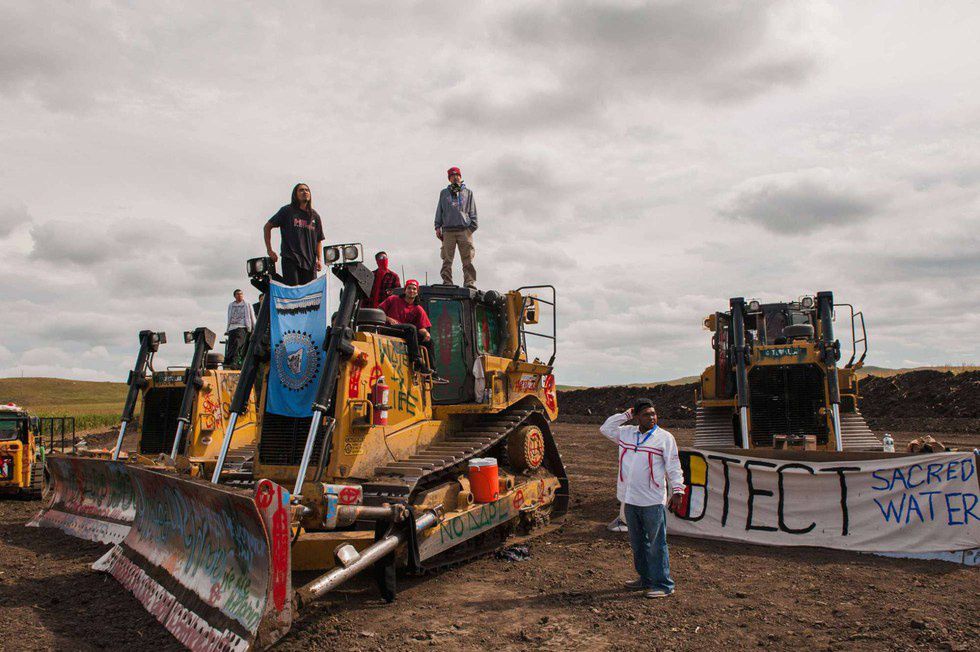
It is an uncannily familiar new chapter in the continual American land grab story - the needs of a Native nation are trampled over by the greed of the rich. Though the proposed legal easement to build under a river (and its tributaries) used for drinking water was recently denied by the Army Corps, that victory is nothing less than a crucial but indecisive battle in the less-than-proverbial war. The important takeaway here is that it is not the time to back off or be lulled into any sense of complacency. The easement decision was announced two weeks ago, and already major news sources have stopped running anything on the story.
It is a good thing then, that Disney films with boppin' tunes, a plucky hero, and a wholesome story often stick around in the public vernacular and conscience a little longer.
There are a plethora of lush parallels to be sketched from Moana and the Standing Rock story; the first of which is the dedication to keeping indigenous tradition, spirit, and cultures alive in a changing world.
Moana's relationship to her grandmother and upholding her village's tradition parallels the relationship many Native people have experienced in passing down their culture generation to generation.
Many Native water protectors have said that their efforts go beyond protecting the environment to increasing solidarity between Native nations as they work together toward a peaceful and spiritually charged demonstration. To illustrate, Doug Good Feather, great-great grandson of Sitting Bull, and a respected leader at Standing Rock:
"All kinds of warriors exist; this is the warrior that we find of peace. If we don't cure our addiction to this – to oil – nothing will matter in the future."
His wise words bring us to another potent message that both feature: the act of giving Mother Earth the love and respect she deserves.
*Spoiler alert*
An artistic representation of the earth goddess, Te Fiti.
For those who haven't seen the film, and chose to keep reading anyway, here is a super speedy breakdown of the plot points this article concerns itself with:
Moana is laden with the task of returning the sacred heart of earth goddess Te Fiti to her before too much gets wonky. Demi-god Maui's greedy need for validation and power over humans convinced him that stealing it would bring him and the human race control over the environment, as well as plenty of extra fame and fortune. Without the presence of her sacred heart, nurturing, flourishing Te Fiti morphs into a volcanic and angry version of herself, Te Ka, and goes about bringing a vague, but still dangerous, "Darkness" to the world that makes all foliage wilt, and a heavy smog to obscure all vision. Global warming, anyone?
After a visually stunning boss battle between Te Ka and Maui, Moana finally recognizes Te Ka for Te Fiti, and heals Te Ka by returning her the heart. The most impactful lyric in the film, for this particularly woke viewer, took place during the powerful slow-mo meeting ground between Moses-esque waves:
"They have stolen the heart from inside you/But this does not define you."
It is a gorgeous, Disney-simplified demonstration of the way humanity has been treating the earth for far too many years. Big oil companies are the self-centered Maui and "shiny-addict" Tamatoa in one; that is, allowing their greed to blind them to the consequences. Tamatoa even exists at the very bottom of the ocean, below the sand, ensconced in a tunnel; might this sound like the way oil is extracted in itself? In this story, any sort of greed is shown to be cruel, and generosity, as in Moana's offering of the heart, is given the properly positive weight it deserves.
In much the same fashion, blaming the earth for protesting the treatment we have given it ourselves with rising temperatures, more natural disasters, and a lack of biodiversity, is as effective as Maui battling Te Ka: not effective at all... Actually making the situation worse.
The only way to move forward - to push past the uneducated, ignorant views of Donald Trump and others who refuse to hear Mother Earth's call for help - is to place focus on game changer movements, like Standing Rock, that raise global consciousness of the many ways Mother Earth has her heart stolen out from under her by the industrial extractions she endures every day. The only answer lies in having the courage and wisdom to heal the wounds we have inflicted by asking for forgiveness and changing our actions.
I understand that this analysis may seem oversimplifying of two very complicated and diverse cultures; my intent was never to lump them together, but instead to use them as two examples of the shift in consciousness that we can only hope is occurring in the western world at this time. For such an enlightened way of thought to be brought to a national and international awareness level at an uncannily close range in time shows that there is progress being made, and as that people can affect change when they follow their inner truth. As Moana's grandmother urges her to act on her truth: "that voice inside is who you are."
In the coming years, I hope to see us all be able to live in better peace with our planet.
Click here for some simple ways to take a stance and decrease your footprint.
And here to donate much appreciated funds to the Standing Rock protectors.



